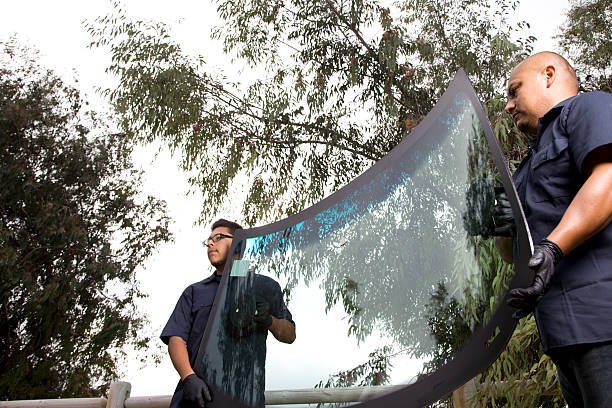
Newport Beach Express Auto Glass
Clear Views, Safe Journeys – Newport Beach's Premier Windshield Repair Experts!
Dealing with auto glass repair can be challenging, especially when bad weather strikes. Rain, snow, extreme cold, or hot temperatures can complicate the repair process of a windshield or other auto glass parts. This comprehensive guide offers advice on how to handle auto glass repair effectively during adverse weather conditions.
Extreme temperatures can affect the curing process of the adhesive used in windshield repair or replacement. Cold weather can prolong the curing time, while hot temperatures can speed it up.
Rain or snow can hinder the repair process, especially if the adhesive or resin needs a dry environment to set properly.
Bad weather often brings reduced visibility and hazardous driving conditions, making it imperative to address auto glass issues promptly and safely.
Regularly inspect your vehicle's auto glass for any damage, particularly before a forecasted change in weather.
Addressing minor chips or cracks before they worsen can prevent the need for more complex repairs during bad weather.
Knowing the limitations of auto glass repair in various weather conditions can help set realistic expectations.
Many auto glass repair services offer mobile options where they come to you. This can be particularly useful in bad weather, as it avoids the need to drive the vehicle in unsafe conditions.
In situations where immediate repair isn’t possible, temporary solutions like glass tape can be used to prevent further damage until proper repair can be done.
Scheduling repairs during a break in bad weather, or in a covered, controlled environment, can ensure the effectiveness of the repair.
In cold weather, the repair resin needs a higher temperature to cure properly. The ideal temperature for windshield repair is typically above 40 degrees Fahrenheit.
Some repair kits are designed specifically for cold weather and come with resins that perform better under lower temperatures.
Preheating the vehicle in a garage or with the use of a portable heater can help maintain the necessary temperature for the repair process.
For adhesives and resins to cure properly, a dry environment is crucial. Rain can interfere with this process and compromise the repair quality.
Seeking a covered area, such as a garage or a professional service center, is essential for effective repair in rainy conditions.
Certain products and techniques can be used in damp conditions, although they may not always be as effective as standard methods in dry conditions.
High temperatures can cause adhesives and resins to cure faster. While this might seem beneficial, it can also lead to improper settling if not handled correctly.
Repairing the glass in a shaded area can prevent the resin from curing too quickly and ensure a more controlled repair process
Technicians working in hot conditions should stay hydrated and take necessary safety precautions to avoid heat-related health issues.

If driving to a repair shop, ensure that visibility is not severely compromised and that it’s safe to drive the vehicle.
Using protective measures like windscreen covers or temporary seals can provide a short-term solution to prevent damage from worsening.
A professional assessment can determine the safety and feasibility of driving the vehicle and suggest the best course of action.
Check with your insurance provider about coverage specifics for auto glass damage, particularly if it’s related to bad weather.
Understanding the limits and deductibles of your policy can help in planning the repair financially.
Regular checks and maintenance can prevent minor damage from escalating into major issues, especially during adverse weather conditions.
Using treatments that make glass more resistant to weather-related damage can be a proactive measure to enhance durability.
Professional auto glass technicians have the expertise to handle repairs in various weather conditions, ensuring quality and safety.
Professionals have access to the right tools and materials for effective repairs, regardless of the weather.
Professional repairs often come with a warranty, providing peace of mind regarding the longevity and effectiveness of the repair.
Auto glass repair in bad weather can be challenging, but with the right knowledge, preparation, and professional assistance, it can be managed effectively. Understanding the impact of different weather conditions on the repair process and taking appropriate measures can ensure that your vehicle remains safe and the repair is successful. Regular maintenance and early intervention are key to preventing major issues, especially when adverse weather is a factor.
100 Vilaggio #235 Newport Beach, CA 92660, United States
Monday to Sunday 7 AM to 9 PM